Sometimes challenges contain the seeds of their own solutions. Bogged-down supply chains and persistent shortages of skilled labor are familiar complications throughout many industries, but efforts to address them are also driving more efficiencies in project planning and execution.

✖


For Joe Podrebarac, there is an obvious solution to today’s shortages of skilled labor, snarled supply chains and high prices for nearly every type of material and commodity.
Finish scoping of projects sooner.
“There is no question that project delivery is getting more complicated,” says Podrebarac, a construction vice president at Burns & McDonnell. “It requires intentional focus on early project alignment with the client and the project team.”
Kelly Jeffcote, vice president of procurement for Burns & McDonnell, sees navigating supply chain disruptions associated with procurement cycles as the new normal — and it's critical to successful project delivery.
“Today, we’re analyzing the details of project material requirements to the micro level, aligning it with the construction schedule, and determining how we buy goods earlier in the project life cycle to eliminate construction delays,” Jeffcote says. “Every aspect of the supply chain has been disrupted and we can’t execute assuming what worked in the past will work today. Our current challenges have fostered creativity and innovative changes to our project execution philosophy across all markets.”


Under normal conditions, an engineer-procure-construct (EPC) project engages constructability and procurement early in the process to reduce schedule while driving up quality and safety. With budgets often reaching billions of dollars, precise engineering has long been considered the best way to avoid costly mistakes.
Now, according to Jeffcote and Podrebarac, this sequence is changing dramatically, with construction and procurement beginning even earlier in project development. Doing so achieves three goals:
“Historically, we’ve placed most of our focus and planning around long-lead equipment,” Jeffcote says. “Now, long-lead equipment and basic supply house commodities have lead times that require planning and early buyout.”
For example, electrical steel, a key component of electrical transformers and equipment, is in short supply because it is also a crucial material for renewables projects. The exponential growth of clean energy projects is expected to continue, keeping demand for electrical steel high for the foreseeable future. Electrical steel is a specialized iron alloy that incorporates thin layers of silicon along with other metals to reduce power loss and introduce a number of other efficiencies in regulating electrical current.
“Electrical steel is one of a number of components that are being affected by the push for clean energy,” Jeffcote says. “It’s a domino effect pushing demand higher for a number of materials.”
Whether the contract calls for EPC, progressive design-build, construction manager at risk, or construction manager/general contractor, detailed execution planning must be even more precise. According to Podrebarac, plans must be flexible enough to adjust on the fly, allowing the team to move on to another project phase if unforeseen shortages occur or deliveries will not hit schedules.
“No question, this is a different way of doing things and forces some new thinking for all parties,” he says.
Solving the procurement puzzle helps tackle shortages of skilled labor, Podrebarac says. Technology also is increasingly beneficial for early constructability planning and procurement planning.
“There is no substitute for collaboration, and the various technology tools we have available help us quickly identify what efficiencies can be gained,” he says. “That translates to more efficient project execution, less frustration and higher morale for our workforce.”
Early identification of critical path goods, coupled with ordering them earlier in the project life cycle, secures shop space in manufacturing facilities and defines material cost for the project early on. This leads to predictable results, Jeffcote says, eliminating construction delays by securing material readiness.
“That basic strategy was a good practice even before we began having the problems we see now,” she says.
It’s also a strategy that helps address the labor challenge, Podrebarac says, because having materials ready and available means crafts can utilize their time on-site most efficiently.
“Our crafts take a lot of pride in staying busy and getting things done right,” he says. “It’s a really bad day when they show up on the job site and don’t have what they need. It’s a really good day when they show up and have everything they need.”
For an increasing number of complex projects, modularizing or prefabricating some components can result in even more efficient use of labor on the project site. Many shortages of construction craft labor — as well as other issues impacting construction schedules — can be avoided when large, expensive components arrive ready for installation instead of coming on pallets and crates and needing to be assembled on-site.

The scope of every project, no matter how big or small, is defined by time and money, factors that depend on the materials and labor required for completion. Significant issues affecting these factors are complex and must be constantly reforecast during the course of the project.
Many blame supply chain bottlenecks on congested maritime ports and inland logistics centers, along with shortages of drivers and dockworkers. However, the reality is that contributors to the supply chain issues are highly project — and location — specific, and will take considerable time to untangle. Raw material shortages and factory closures brought on by the COVID-19 pandemic have been exacerbated by unrelenting consumer demand combined with aging road, rail and maritime infrastructure that is past due for investment.
The 2021 federal Infrastructure Investment and Jobs Act allocates more than $1 trillion to jump-start needed upgrades. But Chitra Foster, a regional water practice manager at Burns & McDonnell, says this promise of funding will not be a panacea for local and state governments.
“There are two realities our clients live with,” Foster says. “First, prices are rising. Almost as soon as funding is promised, the needs rise to meet or exceed the allocations. Second, the funding available can only address the most urgent priorities, particularly in the water sector. It’s great to actually be having meaningful national dialogue on the state of our infrastructure, but we have to be even more efficient in project planning and execution to make sure we stretch these resources as far as possible.”
A new $500 million water treatment facility being built for the city in Wichita, Kansas, illustrates how many of today’s challenges can be met with flexibility in project execution, labor usage, and strategic procurement of goods and materials. A tightly integrated project management approach has the Northwest Wichita Water Facility, a 120 million-gallon-per-day water treatment plant, on track for completion several months ahead of schedule.
“The best brains in our business focus on managing and eliminating the risk to final project delivery,” says Foster, design manager for the overall project. “Continual alertness and procurement agility has been crucial — from early scoping, collaborative constructability reviews, adaptable design, scheduling skilled trades and craft, and the ability to self-perform certain aspects. I think the processes we are proving on this facility project are going to set the standard for a lot of what we do moving forward.”
✖

Regional Practice Manager, Integrated Engineering Management
Burns & McDonnell

Vice President
Burns & McDonnell

Chief Safety Officer
Burns & McDonnell
Feature
BenchMark
The construction industry doesn’t lack projects or face a struggling economy. Firms are looking to clear a persistent hurdle: craft labor shortage.
Article
Construction market pressures — fluctuating material costs and resource scarcity — increase the importance of planning in staying on time and on budget.
Blog
Burns & McDonnell
Prefabrication is returning to favor on complex construction sites, solving for challenges in skilled trade availability, safety, quality, schedule and cost.
LOAD MORE
Article
Burns & McDonnell
The movement to reduce carbon emissions is giving a speed boost to efforts to electrify transportation. Building the appropriate electrical infrastructure to support this dramatic transition will depend on understanding the reality of new operational models.
Article
Burns & McDonnell
At the heart of the drinking water industry is the need to deliver safe, clean and reliable drinking water to communities. Consumers should not have to think twice about what’s coming out of their tap. For some, however, the reality is unsettling.
Article
BenchMark
Sustaining and boosting growth in the U.S. means implementing clean, smart, efficient infrastructure that keeps people and industry moving. That's just what this new infrastructure law will do, and transportation is at the heart of such significant investment and change.
Article
Burns & McDonnell
Carbon capture, utilization and storage show strong potential to help reduce carbon emissions globally. Successful deployment of one of the newest tools in the net zero emissions toolbox — carbon capture and storage — will depend on understanding a complex permitting process and aligning efforts to speed approvals.
Article
Burns & McDonnell
Taking steps toward reducing carbon footprints and increasing sustainability requires careful planning, integration and innovative solutions using state-of-the-art technologies. As organizations look to diversify their energy portfolios, a clear objective endures: delivering reliable, affordable energy.
Article
Burns & McDonnell
If you’ve sat in traffic along the nation’s highways, considered purchasing an electric vehicle (EV), relied on clean drinking water or used the internet to work remotely, you will likely benefit from the $1.2 trillion bipartisan infrastructure law.
Article
Burns & McDonnell
For decades, business leaders, engineers, economists and community leaders have advocated for more infrastructure spending. Deteriorating infrastructure is deleterious to public health and economic prosperity. In fact, the American Society for Civil Engineers gave the U.S. a “C-” in its 2021 report card for America’s infrastructure. While that score is an improvement from grades spanning the past two decades, it also highlights the need to reinvest in our physical assets.


.png)
BenchMark is an international award-winning news source published by Burns & McDonnell. Since 1926, it has served as an innovative, forward-thinking and solutions-driven resource for communities and industries around the world.
©2024 Burns & McDonnell All Rights Reserved.